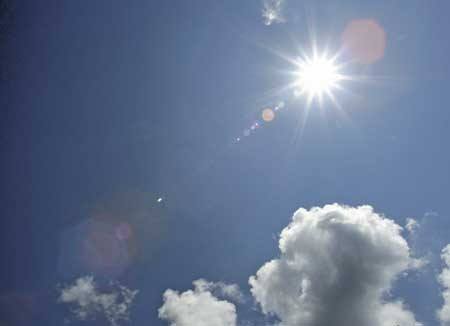By John Patterson & Candace Gossen
(First of a two-part series)
I remember being told by an older, wiser gentleman that he could be dropped naked out of an airplane in the middle of nowhere and be able to survive and eventually thrive.
He said: “The first night I’d find or make shelter. The next day I would get food and make something to wear. Eventually I would find my way to civilization and get a job. There would be something I could do that would have value to someone, even if it’s sweeping the floor. From there I would climb the ladder of success and eventually arrive where I am now.”
He owned his own company, an employment agency.
I have found myself saying something similar from an energy standpoint. I could be dropped into any home in America and within a few months cut the energy bills in half. Given a little more time, I could take them all the way to zero. How could anyone, even “Mr. Sun” make such a statement? Believe it or not, it is true.
It is a fact that most Americans waste more energy than we use. I wouldn’t waste any. That’s 50 percent savings right off the bat.
I would chase down air leaks around doors, windows, electrical boxes, sill plates, caulk or spray foam around plumbing and electrical penetrations under the floor, in the attic, in walls. Chasing down air leaks is time consuming but costs very little. So, I could do that even if I had little or no money.
Next I would insulate effectively, mostly in the attic through which most heat losses occur. That would cost a little money, hundreds not thousands. I would make sure every light in the house was LED and I would install tubular skylights wherever I could.
With appliances, my first addition would be a solar water heater even if it were crude and home made. I would use a solar cooker when possible, a pressure cooker (uses 1/4th the energy of boiling in a pot), I would have a super energy efficient refrigerator and if I couldn’t afford one I’d put the one I had outdoors or through the wall so it lives in a cooler environment and uses half the energy), and I would permanently unplug the clothes dryer. All clothes would be hung outdoors in the summer, and hung indoors on racks in the winter.
A typical home in the Northwest United States uses 30 kWh/day.With the aforementioned measures and with an investment of as little as $2,000, I could bring the usage down 80 percent, to 6 kWh/day.
I have done this myself and helped other homeowners achieve the same result many times. I’ve seen usage brought down to as low as 3 kWh/day before the first photovoltaic module is purchased.
From 3-6 kWh/day, the home stretch is simple: a photovoltaic system that generates an average of 3-6 kWh/day can easily be bought for $5,000-$9,000. Federal, state, and local incentives pay half, so it’s not so expensive if you’ve done all the conservation possible and installed solar hot water. The PV system is the proverbial “cherry on top”. It’s the last piece, the final trump card.
There are always extenuating circumstances. For instance, what if I were “dropped” into a home that was encompassed in trees? Well, I wouldn’t chop down the trees. I would put solar panels elsewhere, or buy into a project on a school or other private or public building that has plenty of sunshine.
What if I had no money? Ah, that’s the fun one. In that case I’d do like my mentor, who said he could be dropped out of an airplane naked and eventually have everything he needed. It would be inevitable, you see, because I would have already made up my mind.
— Editor’s note: John Patterson is founder of Portland-based Mr. Sun Solar and inventor of Sol-Reliant solar water heating system.
Candace Gossen has taught solar architecture and ecological design for more than two decades.
Gossen and Patterson will teach a solar water heating installer certification workshop at Skagit Valley Community College’s Mount Vernon campus, July 11.



